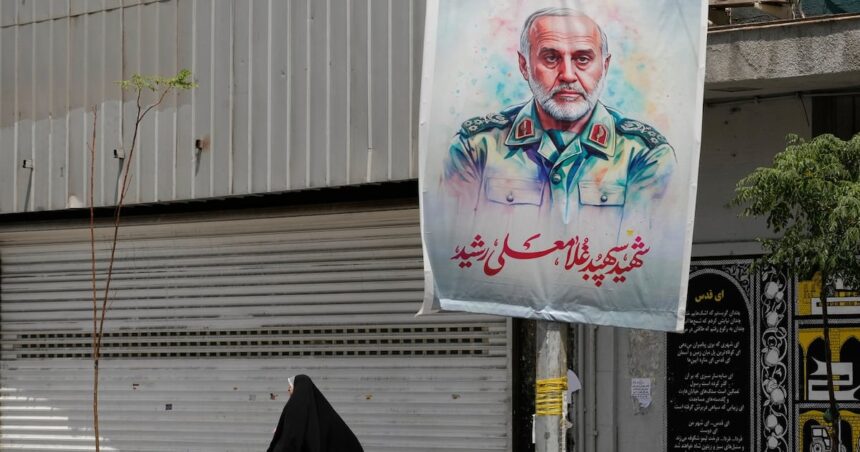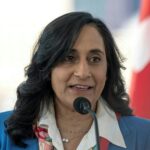A sudden calm has descended over the Middle East as the 10-day ceasefire between Iran and Israel enters its third day. Standing at the Israel-Lebanon border yesterday, I watched military movements slow to a trickle where just last week artillery fire shattered the morning silence.
“We’re holding our breath,” says Eli Carmon, a 63-year-old orchard owner whose farm sits just two kilometers from the border. “Every hour without sirens feels borrowed.” His weathered hands trembled slightly as he pointed toward the hills where Hezbollah positions had been bombing his community for months.
The ceasefire, brokered through Qatari and Omani intermediaries after April’s unprecedented direct exchange of missile strikes, represents the first formal pause in hostilities between the longtime adversaries. Yet beneath the fragile quiet lies a complex diplomatic web that remains dangerously unresolved.
U.S. Secretary of State Anthony Blinken, arriving in Tel Aviv this morning, called the agreement “a critical window that must be reinforced with substantive negotiations.” His visit follows intensive shuttle diplomacy by Deputy Secretary William Burns, who made four regional trips in three weeks to secure the deal.
The roots of this latest confrontation stretch back to Israel’s October 2024 assassination of Hezbollah commander Hassan Nasrallah in Beirut, which triggered a coordinated response from Iran’s “axis of resistance.” When Iranian ballistic missiles struck military installations near Tel Aviv in April, Israel’s retaliatory airstrikes on Iran’s Natanz nuclear facility brought the region to the brink of full-scale war.
“What makes this ceasefire significant is that both sides recognized they were approaching a point of no return,” explains Dr. Nadia Hijab, director of the Middle East Research Institute. “The economic costs were becoming unsustainable for Iran, while Israel faced unprecedented security threats on multiple fronts.”
Indeed, Iran’s economy has contracted by 7.3% since January, according to International Monetary Fund data. Oil exports have plummeted to 200,000 barrels daily, down from over 1 million before tensions escalated. The Iranian rial hit historic lows last month, with inflation exceeding 50%.
For Israel, the human toll has mounted as well. Over 340 Israelis have died in attacks by Iranian-backed groups since October, while nearly 200,000 citizens remain displaced from northern communities near the Lebanese border. Tourism, normally 6% of GDP, has collapsed entirely.
Yet skepticism about the ceasefire’s durability runs deep on both sides. At a Tehran cafe yesterday, university student Maryam Jafari told me: “The regime saved face by striking Israel directly, but nothing fundamental has changed. Our economic suffering continues while the leadership celebrates symbolic victories.”
The agreement’s terms remain deliberately vague – a diplomatic necessity, according to former U.S. Middle East envoy Dennis Ross. “Constructive ambiguity gives both governments room to sell this pause to their domestic audiences while avoiding public commitments that would be politically toxic,” he noted in a phone interview.
Under the deal’s confidential framework, obtained from diplomatic sources, Israel has agreed to pause targeted assassinations of Iranian-linked figures, while Iran will temporarily restrict weapons transfers to proxies in Lebanon, Syria, and Yemen. A joint monitoring mechanism through Omani channels will track compliance.
Yet the agreement conspicuously avoids the central issues driving the conflict – Iran’s nuclear program and its regional proxy network. Israeli Prime Minister Benjamin Netanyahu emphasized this point yesterday: “This temporary arrangement addresses immediate security concerns but does not change our fundamental position on Iran’s nuclear ambitions.”
Regional reactions have been cautiously optimistic. Saudi Crown Prince Mohammed bin Salman praised the “step toward regional stabilization” while announcing plans to host economic talks between regional powers next month. Jordan’s King Abdullah called it “breathing room for broader dialogue.”
The most significant development may be happening behind closed doors. Three diplomatic sources confirmed to me that indirect Israel-Iran talks have begun in Geneva, facilitated by Swiss officials, focusing initially on maritime security in the Persian Gulf. While preliminary, these represent the first acknowledged negotiations between the adversaries in decades.
European Union foreign policy chief Josep Borrell, who arrived in Tehran yesterday, stressed that “turning this fragile pause into sustainable de-escalation requires addressing legitimate security concerns on all sides.” The EU has proposed a comprehensive regional security framework that would include economic incentives for Iran and security guarantees for Israel.
For ordinary citizens caught in the crossfire, the ceasefire brings immediate relief but little certainty. In Ashkelon, Israel, I met Talia Levin unpacking boxes in her apartment after weeks in a bomb shelter. “My son still jumps at loud noises,” she said. “How do you explain to a 6-year-old that safety might be temporary?”
Across the divide in Iran’s earthquake-damaged Kermanshah province, sanctions-related medicine shortages continue despite the ceasefire. Hospital director Dr. Mahmoud Farokhzad showed me nearly empty pharmacy shelves: “We need more than pauses in fighting. We need sanctions relief so our children don’t die from preventable causes.”
As night falls in Jerusalem, the city feels suspended between hope and fear. “We’ve seen too many failed agreements,” warns former Israeli defense minister Moshe Ya’alon. “Without addressing Iran’s nuclear program and proxy militia strategy, we’re just resetting the clock on an inevitable confrontation.”
Whether this ceasefire becomes a footnote or a turning point depends largely on what happens in the coming days. As UN Secretary-General António Guterres noted yesterday, “The parties have opened a door – now they must have the courage to walk through it.”






